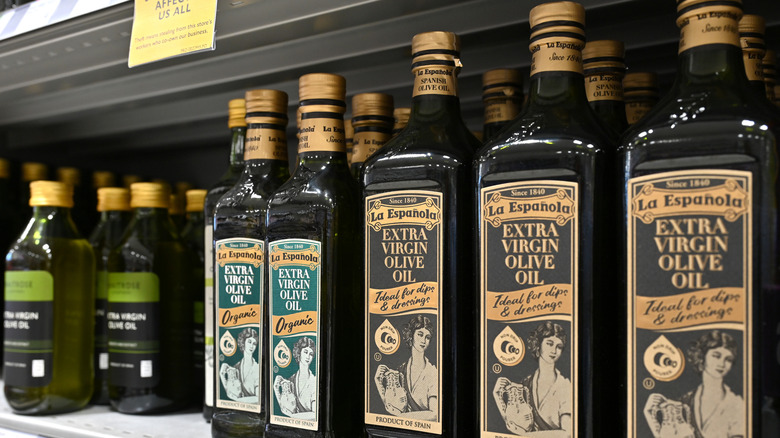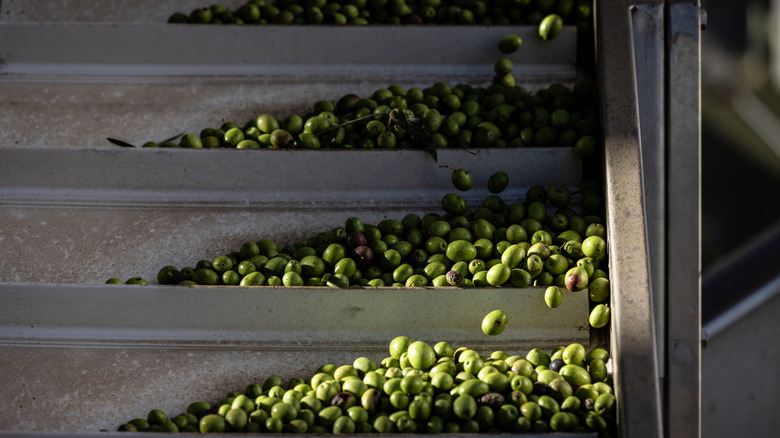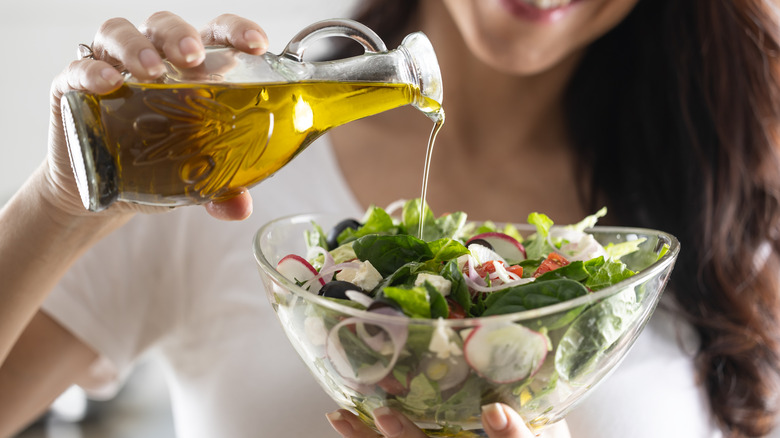Yes, There Is A Difference Between Light And Extra Virgin Olive Oil
Ranging from imported Tuscan bottles to more affordable domestically produced options, olive oil is found in almost every kitchen. Its many forms speak to its omnipresence, and because it is generally more expensive than other cooking oils, it's important to understand the various types, how they're produced, and how to use them.
On the spectrum of high- to low-quality olive oil, the two extremes are extra virgin and light. Extra virgin olive oil, or EVOO, is the highest quality, and consists of the oil extracted from the initial press. This means it's the purest and freshest version of the product and, as a result, packs the most flavor. Light olive oil, on the other hand, is obtained from the later presses and refined with heat and potentially the addition of other compounds. In short, the difference lies in the production: EVOO is purely the first oil extracted, whereas light olive oil comes from later presses, after being heated and potentially mixed with other ingredients.
Pressing and production
The same olives are pressed multiple times to release various types of olive oil, depreciating in quality as the pressings occur. EVOO is the result of a cold-press production, meaning the olives only undergo a grinding and pressing process to extract the oils. The cold-press process preserves the fresh qualities, resulting in the finest olive oil with sharp flavors and a vibrant hue.
Virgin olive oil is the oil released in the second press of the same olives — its color and flavors are between that of EVOO and light olive oil. From there, further presses incorporate factors like heat and water to refine, creating light olive oil. The inclusion of heat and other ingredients dilutes the natural flavor. In some cases, other oils, including a percentage EVOO or vegetable oil, may be mixed in to increase the volume or alter the flavor. The difference in quality means a difference in price, so deciding which one to use in specific situations may help strike a balance between affordability and flavor.
Qualitative differences and their uses
EVOO has a deep yellow or green hue that darkens with age, along with sharp, peppery, grassy, and botanical flavors. The spice notes hit the back of the throat and around the tongue. As the name suggests, light olive oil is lighter all around — in color, flavor, and texture.
Though EVOO seems like the better purchase, stocking a pantry with both optimizes quality and price. For pan-frying or sauteing, using EVOO can be a bit of a waste, as its bolder flavors will probably not be noticeable in the final product. So, it's best to use virgin or light olive oil when the primary use for the oil is to cook rather than flavor. When olive oil is used to impart flavor in a dish — such as to garnish, in a pasta sauce, or for a salad dressing — EVOO is more suitable. Consider selecting one of these five olive oils for a range of types, flavors, and price points.


